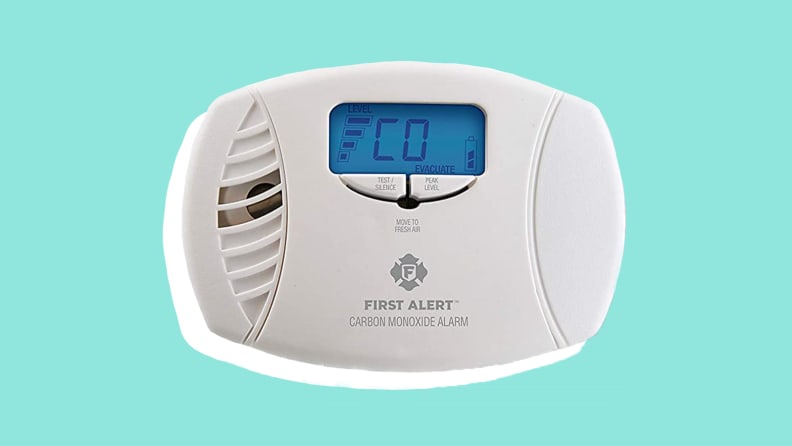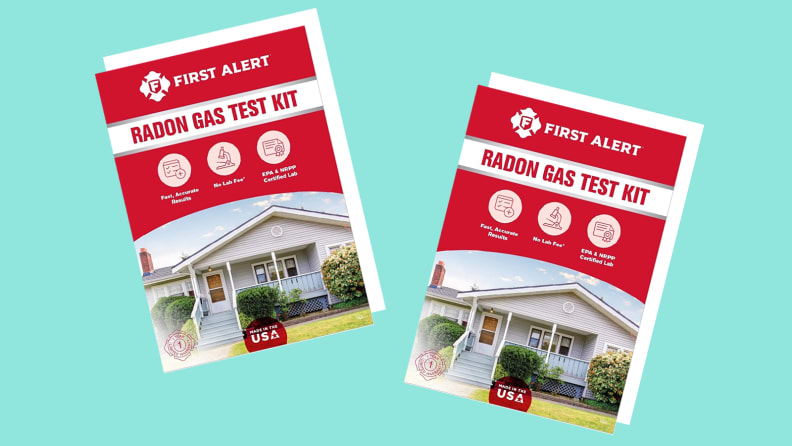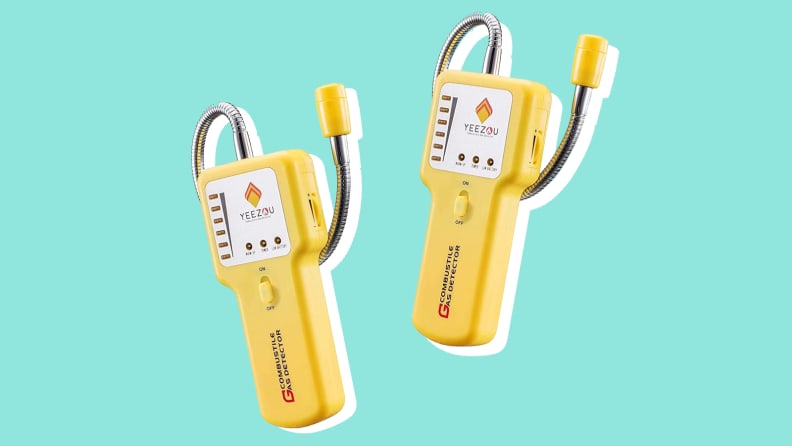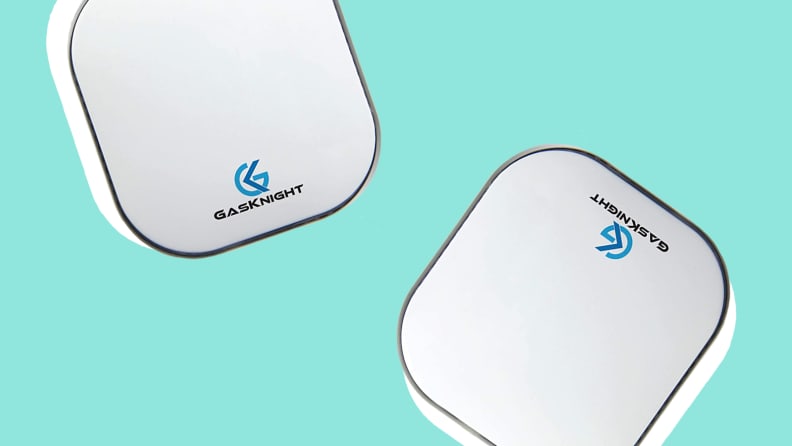Monitor your home's indoor air quality for these evil gasses
Are you keeping track of your home's air quality?
Products are chosen independently by our editors. Purchases made through our links may earn us a commission.
Check out the entire Climate Control series to protect your home from the effects of climate change
There are many factors that can adversely affect the air quality in and around a person’s home. These include your home’s location and proximity to urban or industrial areas, whether or not your home uses natural gas, and exposure to radon, carbon monoxide, or other harmful gasses.
Some of these things, such as your home’s location, can’t really be changed. However, there are ways to address many of the other factors that can contribute to poor indoor air quality.
So, how can you take action and find out whether or not your home is a hotbed of dangerous gasses and particulates?
The first step is to get yourself an air quality monitor. Paul Walsh, the North American general manager of air quality monitoring service BreezoMeter, says, “These products are really helpful in terms of keeping us healthy. Knowing what the air quality is like outside and inside helps people understand how important it is to have a safe place where you’ve got nice clean air. If it happens to be a smoggy day, or a 95°F day, you have a respite.”
Most air quality monitors on the market will test for some or all of the following things: particulate matter, volatile organic compounds (VOCs), carbon monoxide (CO), humidity, and temperature.
While humidity and temperature are more matters of comfort, here’s how to understand the more hazardous things your monitor will alert you to and what you can do to mitigate your risks.
Hazardous elements in your home’s air
Particulate matter
Particulate matter, which is found in smog, haze, and smoke, is airborne pollution that’s generally the result of factories, power plants, trash incinerators, motor vehicles (especially diesel engines), construction activity, and wildfires.
Fine pollen can sometimes be lumped in with particulate matter, and some air quality monitors will also offer pollen counts as well.
VOCs
VOCs or volatile organic compounds, are found in many household cleaners, paints, and cosmetics. These and carbon monoxide can all have destructive health effects.
They’re also a main component in ground-level ozone, which, along with particulate matter, comprises much of what we call air pollution. They can exacerbate breathing issues, lung diseases, high-risk pregnancies, heart attacks, and death.
Carbon monoxide

Stay alert whenever there's a spike in carbon monoxide in your home.
As most of us are aware, carbon monoxide can even cause death in high concentrations.
It’s important to note that having an air quality monitor is not the same as having a working carbon monoxide alarm in the home. Any homeowner should have these situated around the house, working in concert with air quality monitors.
Carbon monoxide poisoning is often caused by improperly ventilated and/or malfunctioning fuel burning appliances such as furnaces, ranges, water and room heaters. While an air quality monitor will help detect higher-than-normal levels, it’s also important to check that all of your appliances are properly installed, up-to-date, and ventilated.
Get the First Alert CO615 at Amazon for $31 Get the Google Nest Protect Smoke & Carbon Monoxide Alarm at Amazon for $117
Radon

Radon naturally occurs in soil, rock, and water and longterm exposure can be harmful to humans.
The EPA states that as many as one in 15 homes is affected by above-normal levels of radon. This radioactive gas naturally occurs in soil, rock, and water, and if people are overexposed to it over periods of time, it can cause cancer.
As we mentioned above, most at-home monitors will test for VOCs, particulates, and carbon monoxide, but not radon. In fact, many of us have only ever tested for radon during our home inspections and never think about it after that.
Unfortunately, radon is colorless, odorless, and can slowly build up over time, creating a carcinogenic environment in your home—and you won’t even know it.
Though it’s expensive, Airthings makes one of the only air quality monitors on the market that also tracks daily levels of radon in your home, and it can be integrated into your smart home features.
Get the Airthings House Kit Plus at Amazon for $355
Hydrogen sulfide

A hydrogen sulfide detector can help identify if there's a "sewer gas" leak.
Hydrogen sulfide is sometimes called “sewer gas,” and it’s a product of the bacterial breakdown of organic matter and human and animal wastes. (It also occurs naturally in crude petroleum, natural gas, volcanic gasses, and hot springs, and it’s usually associated with a rotten egg smell.)
While the smell of it is unpleasant enough, exposure to high concentrations of hydrogen sulfide can cause myriad health problems. In the home, faulty plumbing or sewer drains that have dry traps can allow hydrogen sulfide gas to build up and enter.
While more expensive gas detectors are often installed in larger buildings and industrial areas, most homes don’t have them built in. You can buy a portable version if you’re concerned with sewer gas buildup in your home.
Get the EG Portable Natural Gas Detector at Amazon for $35
Natural gas like propane, methane, and butane

Identify natural gas build ups with a detector.
Natural gas detectors are made to detect an abundance of natural gas in your home, which can be caused by leaks, improper use of appliances, or even a utility issue in your area.
When natural gas builds up over time, not only is it unhealthy to breathe in but it can result in a potential explosion or fire. An at-home natural gas detector can help you identify dangerous gas leaks.
Get the GasKnight Natural Gas Detector and Propane Detector at Amazon for $36
How to improve your home air quality
Now that you’ve identified common air pollutants in the home, what can you do to reduce the presence of problematic substances in the air?
According to Taylor Gillespie, strategic communications advisor at the Environmental Protection Agency, there are three important strategies to improving indoor air quality: source control, ventilation, and supplement air cleaning/filtration. That means reducing exposure to possible hazards such as gasses, allowing for the flow of fresh air (either in or out of the house), and using an air purifier when necessary.
In wildfire-prone areas especially, keeping particles that are the result of smoke out of your home is key. Sealing off your home as much as possible, including closing doors and windows and even sealing cracks with tape will help.
Similarly, in urban areas where automobile exhaust or other kinds of smoke and smog are prevalent, sealing your home, or simply closing your windows is essential to reducing the amount of particle matter you breathe.
On the flip side, what if the call is coming from inside the house? If your home has unhealthy levels of carbon monoxide, get out immediately and call 911. If possible, open any windows and doors before leaving, as it usually takes at least four to eight hours for carbon monoxide to dissipate to healthy levels.
Similarly, if an abundance of natural gas is detected, the best thing to do is vacate your home and contact your utility company.
If high levels of VOCs are detected, make sure that any household solvents, cleaners, and paints are tightly sealed and stored safely (preferably in a shed or detached garage outside the house). Ventilate the affected areas.
To avoid overexposure, switch to low- or no-VOC paints and household cleaners whenever possible. In addition, high efficiency air filters used with your home's HVAC system, and properly sized and well-maintained portable air purifiers, are also effective at reducing certain indoor pollutants.
As for radon, if your at-home air quality monitor doesn’t screen for radon, you can buy a radon test at your local hardware store or on Amazon.
Once you administer the test, you will need to send it away for analysis. If your home’s radon levels read 4 picocuries per liter (pCi/L) or higher, you should call a radon mitigation contractor to make improvements that will reduce the amount of radon entering your home.
It's important to note here that while home air purifiers can do a great job filtering certain pollutants, they will not filter out radon. Instead, you must identify the source of radon in your home to seal it off in order to properly reduce your exposure to the gas.
Your home should be a safe space to retreat to feel comfortable and have peace of mind knowing that the air inside is clear and healthy. By taking the time to monitor your home and understand these common pollutants, you can feel good knowing you’ve created a healthy space for you and your family.
The product experts at Reviewed have all your shopping needs covered. Follow Reviewed on Facebook, Twitter, Instagram, TikTok, or Flipboard for the latest deals, product reviews, and more.
Prices were accurate at the time this article was published but may change over time.


